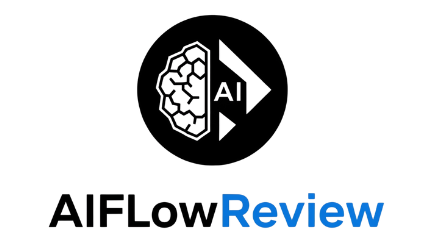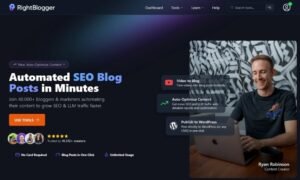AI-powered A/B testing is everywhere right now, promising to make testing accessible for everyone from marketers and creators to full-stack AI pros. With the rise of web experimentation, the hype is loud, but does it actually move the needle or just add more noise to the crowded world of A/B testing software and conversion optimization? After rolling up my sleeves with real campaigns, I’ve found both shortcuts and stumbling blocks that don’t get mentioned in sales pitches.
This post shares my honest take: where AI makes A/B testing setup feel almost automatic, where it falls flat, and why human sense still pays off. I’ll get into practical tips, workflows, and test results so you can decide for yourself if AI A/B is worth trusting with your experiment—or just another shiny tool fighting for your attention. If you want to see how AI fits with the latest in marketing automation, take a look at the best AI marketing tools 2025 roundup as well.
How AI Changes A/B Testing: Simplicity and Scale
AI has transformed the traditional challenges of A/B testing by promising faster results, easier workflows, and deeper insights. In reality, integrating AI with A/B testing tools streamlines the classic “run and wait” approach, though some complexities remain. Let’s explore the practical, day-to-day ways AI advances A/B testing from a buzzword to an efficient, data-driven workflow.

Photo credit: Image generated by AI
Core Benefits of AI-Powered A/B Testing Tools
The difference between manually setting up split testing like it’s 2015 and leveraging modern A/B testing software is remarkable. Here’s what stands out when you use AI-powered tools hands-on:
- Time Savings and Speed of Insights: AI often auto-generates test variations—from ad headlines to landing page layouts and email subject lines—eliminating hours spent brainstorming. Instead of guessing which ideas to test next, AI platforms instantly suggest new options. Many tools now incorporate predictive analytics to rapidly highlight likely winners, shortening the time needed to declare a result and speeding up your CRO efforts.
- Better Test Ideas from AI: No more struggling with a blank A/B draft. AI provides instant copy suggestions, image swaps, or calls-to-action tweaks based on trending topics and audience preferences. For example, some platforms recommend button color changes, alternative onboarding flows, or headline rewrites tailored to improve user experience and conversion rates.
- Personalization at Scale: Personalization is a game-changer enabled by these tools. Instead of one-size-fits-all approaches, you can segment your experiments by user behavior, geography, or device type. Imagine running hundreds of micro-experiments—like multiple landing page variations for mobile versus desktop—rather than just testing two broad options. This level of personalization elevates your split testing strategy and CRO outcomes.
Relatable Use Cases
- Upload your sales landing page copy; AI generates five alternative headlines and two new hero images inspired by past winning experiments.
- The platform suggests a “buy now” vs. “learn more” CTA test, then automatically routes mobile traffic to the higher-performing variant.
- Smart segmentation runs in the background, showing Variant B only to users who interacted with specific offers or arrived via an email campaign.
These capabilities simplify the process for solo founders and enable growth hacking for bigger teams by scaling experiments efficiently. But do these claims always hold true in practice? That depends heavily on the quality of data and the chosen A/B testing tools—an insight drawn from extensive hands-on trialing rather than just marketing materials. For a practical approach to evaluating these tools, see our methodology for reviewing AI tools.
To dive deeper into why AI-powered testing boosts ROI and CRO when used wisely, check out the detailed A/B testing: A step-by-step guide for 2025 (with examples) packed with actionable campaign tips.
What Makes Setup Truly Easy? Understanding AI A/B Testing Tools
Not all AI-powered A/B testing tools offer the same level of simplicity. While some feel almost push-button, others still require manual setup, data wrangling, or coding knowledge. Here’s what I examine in any tool that claims “easy A/B testing”:
- Automation Level: Does the software auto-generate variations, automatically target traffic, and call the winner? Or do you still need to manually design each test arm and launch experiments yourself?
- User Input and Technical Know-How: The easiest tools use plain-language wizards where you answer simple questions. More complex options may require uploading CSVs, connecting APIs, or tweaking code. True ease means minimal setup effort with clear walkthroughs and usable templates.
- Onboarding and Setup Flows: The best A/B testing tools guide you step-by-step from syncing your website to launching your first split test. A confusing dashboard or complex steps can slow growth hacking efforts and reduce adoption.
Real-World Checklist for “Easy” AI A/B Testing
- Does the platform auto-identify crucial landing pages or key user flows to test?
- Are data and settings presented clearly, without industry jargon?
- Can you integrate the tool with existing marketing stacks without requiring developer resources?
- Is there transparency about what the AI is doing and why?
Remember, clean initial data and honest intent are as vital as algorithmic power. For every CRO campaign, you get out what you put in. Many AI A/B testing tools advertise upfront simplicity, but hidden complexities often emerge during integration or lack of transparency. My advice: always validate promised features against actual dashboard experience before committing to your next launch cycle.
If you’re on the hunt for the right platform, it’s wise to compare how different A/B testing software rank and integrate by exploring our AI tools comparison: features and performance.
For marketers aiming to optimize landing pages effectively, the community-curated list of A/B testing best practices outlines modern standards every stack should support—including multivariate testing capabilities and intuitive user experience enhancements.
Whether you’re running A/B tests with industry leaders like Google Optimize or exploring innovative AI-powered platforms, embracing these advancements unlocks greater experiment velocity and sharper CRO outcomes.
Is There More Noise Than Value? Common Pitfalls of Automated A/B Testing and Experiments

AI promises to streamline A/B testing and experiments with autopilot processes, instant generation of variations, and stress-free optimization. However, it can also produce an overwhelming amount of data, constant “insight” alerts, and multiple test arms so quickly that quality often gets lost in the flood. If you let the machine take over without critical data analysis, you risk drowning in numbers that look promising on the dashboard but lack real-world value—sometimes AI even directs you toward costly errors.
This isn’t about rejecting automation; it’s about knowing when to pause, review, and trust your own judgment. Let’s dive into the common pitfalls of automated A/B testing and practical ways to spot when you’re gaining valuable insights versus just chasing noise.
Understanding When AI Makes Sense—and When It Doesn’t
AI can accelerate data-driven A/B testing, but it’s not a replacement for critical thinking or understanding your audience’s user behavior. I’ve learned to look for a few signs that it’s time to “trust but verify.” Here are key guidelines and red flags to keep in mind:
When to Trust the AI
AI excels in experiments that are repeatable and clearly measurable. These situations often deliver real benefits:
- Big, high-traffic sites where you can run multiple tests simultaneously and achieve quick statistical significance.
- Consistent, measurable goals like click-through rates or email opens—not vague metrics like “brand lift.”
- Simple variable tweaks—button color, copy swaps, headline variants—where context plays a minimal role.
When you have clean datasets, a clear hypothesis, and a transparent system in place, it’s smart to let AI manage the experiment. If you’re curious about how advanced AI tools perform before fully committing, resources like this list of common A/B testing mistakes offer valuable insight.
When to Step In and Review
Pausing automation to sanity-check results is essential. Watch out for these warning signs:
- Obvious mismatches: AI-generated variations that target the wrong user segment (e.g., “Student Discount!” shown to a B2B audience) or use language that’s completely off-brand.
- Flat outcomes: If every A/B test comes in near a 50/50 split, it often indicates the variations don’t truly impact user behavior, or the AI is chasing noise rather than value.
- Sudden “winners” with wild jumps: Sometimes, a top-performing variation spikes due to outlier days or bot traffic—and AI might not detect these anomalies.
- User intent confusion: AI might A/B test a “Buy Now” button against “Subscribe Now,” but only you understand if visitors are in browsing or comparison-shopping mode.
It pays to ask: “Does this align with real user feedback or conversations?” or “Would I stand behind this as a brand owner?”
Typical Warning Signs a Test Is Off-Track
Here’s a quick checklist I use when monitoring automated A/B testing workflows:
- Nonsense variations: Headline tests that don’t fit the product or feel robotic.
- Too many test arms, too few visitors: AI splits already-small traffic into subgroups, undermining statistical significance.
- No actionable winners: Many “micro-wins” that fail to optimize conversions or lead to real gains in sales, signups, or engagement.
AI-driven platforms can hide poor data or unreliable test arms behind polished charts. I’ve seen dashboards label a “winner” based on just three conversions—statistically insignificant—but still marked with a green checkmark.
Where AI Misses Context or User Intent
Here are some real-world examples where AI falls short in understanding context or user behavior:
- Seasonal mismatch: AI pushes a “summer sale” landing page variant to users in Australia during their winter season.
- Cultural tone-deafness: Automated messaging that’s awkward, insensitive, or incomprehensible to local users—or worse, outputs banned phrases.
- Outdated learnings: The system optimizes for yesterday’s trends because it can’t grasp subtle industry shifts in real time.
For a deeper dive, Adobe’s guide on avoiding common A/B testing mistakes offers a thorough checklist to identify issues early.
The key takeaway: AI is a powerful tool for managing A/B testing experiments at scale, but it isn’t a mind reader. Use it to accelerate testing, uncover surprises, and handle data-driven tasks—but don’t relinquish your final decision. Often, the noisiest results are the easiest to automate and dismiss, not the ones that truly move your metrics forward.
My Experience: What Worked and What Didn’t With AI-Powered Testing

AI-powered A/B testing tools can quickly generate impressive charts and suggest numerous variations, but there’s often a gap between these polished dashboards and actual business wins. Over the past year, I’ve run A/B tests across live environments—sometimes chasing immediate conversion optimization, other times clearing out a maze of automated clutter. This is my honest take on what worked and what didn’t with easy A B testing.
Automation definitely saves clicks and effort at first, but neglecting important setup details or blindly trusting AI suggestions can stop progress in its tracks. When AI delivered strong results, it was thanks to carefully managed experiments, active monitoring, and questioning “suggested” winners instead of accepting them at face value. The worst outcomes happened when I let AI churn out endless variations without checking their relevance or scrutinizing key metrics that truly impact the user experience. Below, I’ve shared practical insights for cutting through the noise and achieving meaningful, data-driven wins in AI split testing.
Top Tips for Getting Real Results With AI A/B Testing
Want AI to make your A/B testing experiments smoother, not just louder? Here’s a checklist that has helped me focus on actionable outcomes with easy A B testing and effective A/B testing tools.
Start Small and Stay Hands-On
- Don’t dump your entire site or all creative assets into an AI A/B test right away.
- Pick one clear goal—for example, improving a specific landing page’s click-through rate or boosting email open rates.
- Run a quick initial experiment and carefully audit AI-generated variations. If something feels off-brand or irrelevant, tweak or discard it.
Review AI Suggestions—Don’t Rubber Stamp
- A/B testing tools powered by AI can create strange combinations or text that don’t fit your audience’s context. Review each A/B test arm before launching.
- I’ve caught awkward headlines and off-tone CTAs that no human would have approved.
- If you’re new to this or want detailed guidance, check out this beginner’s guide to AI tools, which offers practical tips for setting up A/B experiments effectively.
Set Clear Metrics You Actually Care About
- Avoid vanity data. Define data-driven KPIs that truly matter for each experiment, such as sales, clicks, or engagement.
- Document your hypothesis. Even when using AI, it’s easy to get distracted by small wins that don’t align with your core conversion optimization goals.
- For deeper insights on building meaningful A/B experiments, see the Contentful blog on A/B testing best practices, full of actionable tips every A/B testing tool should support.
Split Oversight and Automation
- Use AI to automate variant generation, experiment setup, and routine traffic splitting.
- Manually approve test variations, define KPIs, and sanity-check suggested “winners.”
- Let machines handle repetitive tasks but keep critical decisions under human control.
Always Close the Loop: Review and Act
- Don’t just gather dashboards—review the results carefully, confirm statistical significance, and act quickly on genuine insights.
- Archive or pause losing variations and integrate winning changes into your core workflow to improve your landing page and overall user experience.
Summary Checklist: Boost the Signal, Mute the Noise
StepWhat to DoPro TipStart with one clear testFocus your effort on one KPI or outcomeSimplicity beats over-testingReview each variantManually inspect AI-generated suggestionsTrash anything off-markSet real metricsOnly track what feeds your business goalsIgnore “pretty” graphs that mean nothingBalance human + machineAutomate drafts, keep final say in your handsDon’t let the tool become the bossPrioritize actionAct on strong results, skip endless tinkeringMove fast and keep learning
If you’re unsure whether your process needs fine-tuning, brush up on what to know before using AI tools. Even with easy A B testing, a bit of skepticism and thoughtful structure can pay off significantly.
For a side-by-side comparison of how today’s leading AI platforms handle A/B workflows, check out the updated A/B testing step-by-step guide for 2025, which can help you frame the right questions before your next campaign.
In the end, nothing beats simple, clear steps combined with human oversight. These practices have saved me hours—and prevented more than a few headaches—no matter how advanced the A/B testing tools claim to be.
Best Practices and Recommended Tools for Easy A/B Testing
 Successful A/B testing delivers meaningful gains when the right A/B testing tools are paired with a disciplined process. Some platforms offer flashy interfaces but introduce friction, while others excel with hands-off setup, useful reporting, and intuitive workflows. After evaluating the leading names, it’s clear that top results come from balancing strong tool features, rigorous sanity checks, and ongoing reality tests—especially important when AI-driven experiments try to overreach. Let’s break down how to ensure your experiments genuinely optimize conversions instead of generating dashboard noise, plus the best A/B testing software that makes life easier for product teams and marketers alike.
Successful A/B testing delivers meaningful gains when the right A/B testing tools are paired with a disciplined process. Some platforms offer flashy interfaces but introduce friction, while others excel with hands-off setup, useful reporting, and intuitive workflows. After evaluating the leading names, it’s clear that top results come from balancing strong tool features, rigorous sanity checks, and ongoing reality tests—especially important when AI-driven experiments try to overreach. Let’s break down how to ensure your experiments genuinely optimize conversions instead of generating dashboard noise, plus the best A/B testing software that makes life easier for product teams and marketers alike.
How to Tell If Your Testing Is Working—Or Just Adding Noise
 Identifying whether your A/B testing workflow is delivering actionable insights or simply generating extra work starts by spotting warning signs in your experiments. Here are key cues that your results may be overwhelmed by noise—and what to do to cut through it:
Identifying whether your A/B testing workflow is delivering actionable insights or simply generating extra work starts by spotting warning signs in your experiments. Here are key cues that your results may be overwhelmed by noise—and what to do to cut through it:
Watch Out For These Red Flags
- Inconsistent Results: Running the same A/B test multiple times yields different winners, indicating unreliable signals.
- Wild Data Swings: Variant performance fluctuates dramatically day-to-day without clear explanation.
- Unclear Conclusions: Dashboards highlight a “winner,” but the changes barely impact user behavior or conversion rates.
- Too Many Variations: Dividing a limited audience across five or more test groups weakens statistical confidence, especially compared to simple A/B testing.
- False Positives: Statistically significant tags or big green arrows appear due to tiny sample sizes or traffic anomalies (bots, for instance).
If you encounter any of these pitfalls, pause and reassess your approach. Many platforms—even sophisticated ones like Google Optimize—can prematurely declare winners or auto-churn variations, but the nuances matter more than flashy charts.
Practical Steps to Cut the Noise
A/B testing can derail without careful data analysis and controls. Here’s a straightforward approach to recalibrate experiments and focus on genuine customer experience improvements:
- Audit Sample Sizes: Noise often arises when audiences are split too thinly across many variations. Stick to fewer variations with larger groups to strengthen results.
- Repeat Core Tests: A variation that wins once but fails in subsequent A/B tests is likely a statistical fluke, not an authentic improvement.
- Dig Into Segments: Wins may appear or disappear within certain devices, geographic regions, or campaign sources. Segmenting the data helps validate these findings.
- Pressure-Test the “Why”: When AI or experimentation platforms champion a headline or feature using feature flags, verify the rationale aligns with what you know about user behavior.
- Set Clear Stop Rules: Define how long an experiment should run and the minimum number of users required for reliable insights upfront to avoid chasing random noise.
Reflection and iteration are where meaningful A/B testing happens. At each milestone, ask: Are these lifts real improvements, or just random traffic fluctuations? Have these experiments unveiled actionable insights that product teams can leverage? Regular review cycles help filter out noise and sharpen your A/B testing workflow to truly optimize conversions rather than clutter dashboards.
For an in-depth look at solid experiment design and handling ambiguous results, the A/B Testing 101 from Nielsen Norman Group explains the science of clean experiments. For practical, step-by-step walkthroughs applying these principles, see the 2025 step-by-step guide to A/B testing.
The Value of Ongoing Reflection and Tuning
Consider A/B testing as a continuous improvement loop rather than a one-off task. Leading product teams don’t settle for the first declared winner—they iterate on insights, refine their methods, and remain cautious of easy wins displayed on dashboards. Asking “Are these lifts meaningful, or just random noise?” keeps you ahead in improving customer experience and maximizing impact.
For more best practices and examples, the Contentful guide to A/B testing best practices offers clear guidance so you can confidently know what’s driving success.
In the next section, I’ll explore my favorite A/B testing tools—including honest user feedback beyond sales copy, and a few important extras that enhance AI-powered setups with advanced capabilities like multivariate testing and feature flags. Look out for options ranging from Google Optimize integration with existing platforms to flexible open-source alternatives that empower your product teams.
Conclusion
Approaching A/B testing as an ongoing partnership brings the best results—let AI handle the grunt work, while your insight acts as the data-driven filter that transforms outcomes into meaningful growth and conversion optimization. The biggest wins come from treating automation as an assistant, not the final decision-maker. Start small to get comfortable, review each round with a clear head, and intervene when the numbers seem off or don’t align with your brand’s reality or user experience.
There’s real value in combining AI’s speed with human judgment. Every team, whether seasoned or new to optimization, benefits from a steady loop: test, learn, adjust, and repeat. Applying insights from each A/B test to your web page ensures continuous improvement. Want to deepen your workflow, share your most unusual AI test result, or push the craft forward? Keep the conversation going—your feedback and stories help define what A/B testing can achieve in conversion optimization.
Thanks for reading and contributing your voice to the experiment.

















